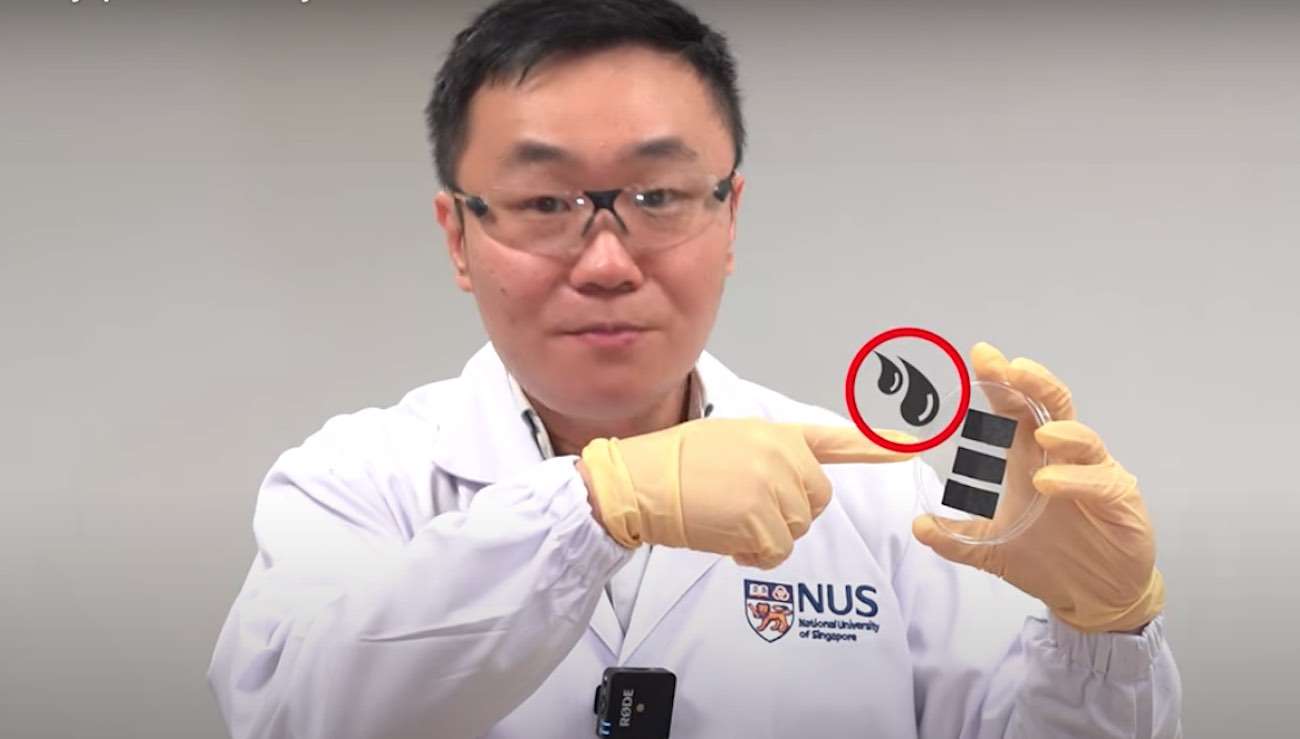Machine Just Turned Martian Atmosphere Into Pure Oxygen Just Like a Little Tree
Sustaining a human presence on Mars would require breathable oxygen, which is obviously too much of a burden to transport in spacecraft.

Imagine being able to generate electricity by harnessing moisture in the air around you with just everyday items like sea salt and a piece of fabric.
That's just what a team of researchers from Singapore has shown, having developed a moisture-driven battery made of a thin layer of fabric, sea salt, carbon ink, and a special water-absorbing gel.
About 0.3 millimeters in thickness, the moisture-driven electricity generation device, or MEG, is built upon the ability of different materials to generate electricity from the interaction with moisture in the air, and could potentially fit a wide range of real-world applications, including wearable electronics like health monitors, electronic skin sensors, and information storage devices.
Such devices have already been developed, but face major challenges with balancing and maintaining moisture content between where it shouldn't be and where it needs to be.
Now, a research team led by Assistant Professor Tan Swee Ching from the National University of Singapore's Department of Materials Science and Engineering have devised a novel MEG device that can perpetually maintain a difference in water content and generate electrical output for hundreds of hours.
The team's MEG device consists of a thin layer of fabric which was coated with carbon nanoparticles. In their study, the team used a commercially available fabric made of wood pulp and polyester.
One region of the fabric is coated with a hygroscopic ionic hydrogel, and this region is known as the wet region. Made using sea salt, the special water-absorbing gel can absorb more than six times its original weight, and it is used to harvest moisture from the air.
"Sea salt was chosen as the water-absorbing compound due to its non-toxic properties and its potential to provide a sustainable option for desalination plants to dispose of the generated sea salt and brine," shared Assistant Professor Tan.
The other end of the fabric is the dry region which does not contain a hygroscopic ionic hydrogel layer. This is to ensure that this region is kept dry and water is confined to the wet region.
Once the MEG device is assembled, electricity is generated when the ions of sea salt are separated as water is absorbed in the wet region. Free ions with a positive charge are absorbed by the carbon nanoparticles which are negatively charged. This causes changes to the surface of the fabric, generating an electric field across it.
Using a unique design of wet-dry regions, the team showed they could sustain electrical output even when the wet region was saturated with water. After being left in an open humid environment for 30 days, water was still maintained in the wet region demonstrating the effectiveness of the device in sustaining electrical output.
"With this unique asymmetric structure, the electric performance of our MEG device is significantly improved in comparison with prior MEG technologies, thus making it possible to power many common electronic devices, such as health monitors and wearable electronics," explained Tan.
The MEG device has immediate applications due to its ease of scalability and commercially available raw materials. One of the most immediate applications is for use as a portable power source for the portable-powering of electronics directly by ambient humidity.
By connecting three pieces of the power-generating fabric together and placing them into a 3D printed case that was the size of a standard AA battery, the voltage of the assembled device was tested to reach as high as 1.96V-higher than a commercial AA battery of about 1.5V-and enough to power small electronic devices such as an alarm clock.
The scalability of the NUS invention, the convenience of obtaining commercially available raw materials as well as the low fabrication cost of about SIN$0.15 per square meter make the MEG device suitable for mass production.
"Our device shows excellent scalability at a low fabrication cost. Compared to other MEG structures and devices, our invention is simpler and easier for scaling-up integrations and connections. We believe it holds vast promise for commercialization," said Tan.
CHARGE Up Your Friends With This Awesome Innovation…
Be the first to comment